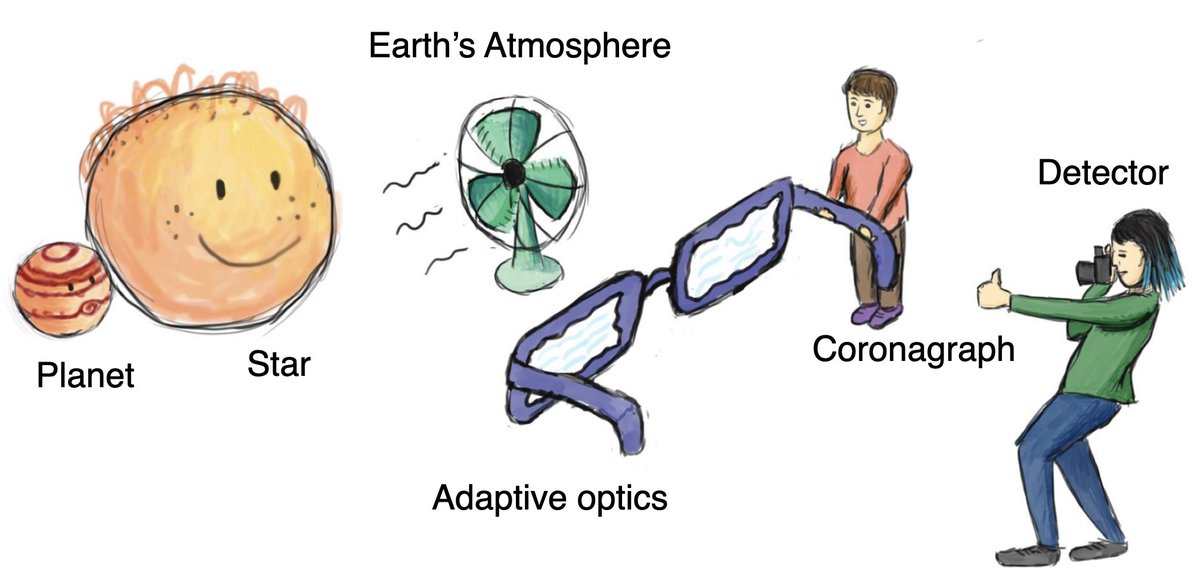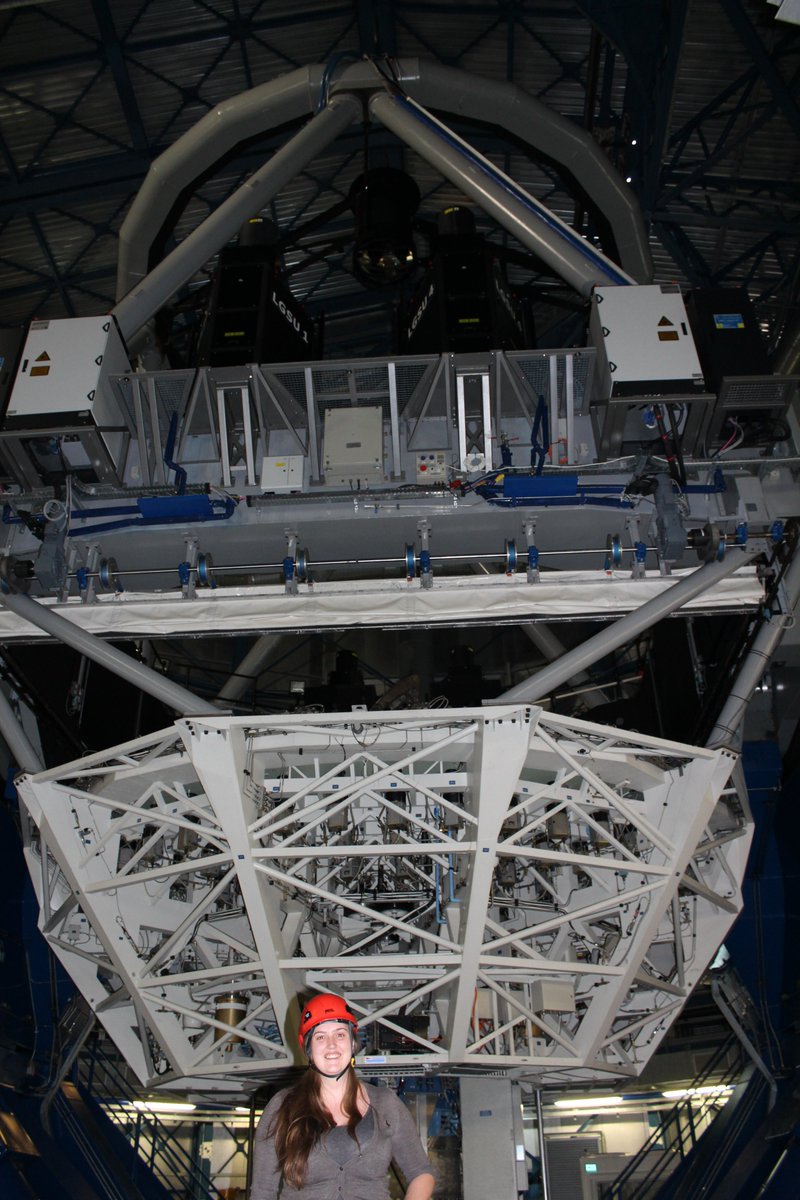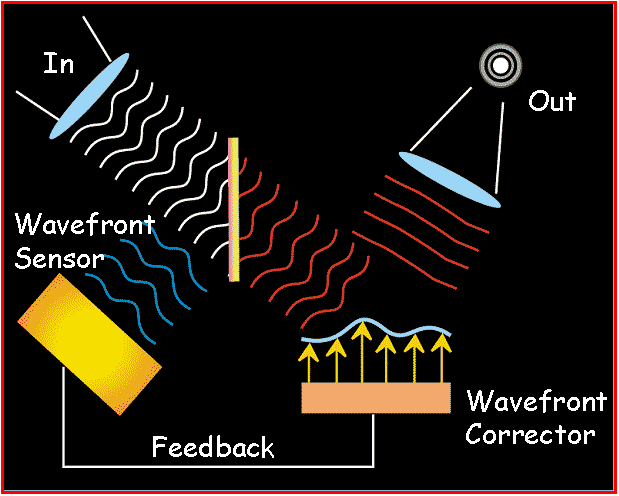Hey it's @AstroRickman here & I want to tell you all about my FAVORITE method to hunt for exoplanets -- direct imaging! 

Direct imaging is quite literally taking a DIRECT image of a planet next to its star
This movie from @semaphore_P shows 4 planets orbiting HR8799 https://twitter.com/realscientists/status/1348780606361128963
https://twitter.com/realscientists/status/1348780606361128963


Direct imaging is quite literally taking a DIRECT image of a planet next to its star
This movie from @semaphore_P shows 4 planets orbiting HR8799
 https://twitter.com/realscientists/status/1348780606361128963
https://twitter.com/realscientists/status/1348780606361128963
This is NOT an easy thing to achieve! The host star of a planet is MANY MANY times brighter than the planet that we are trying to observe 

In the simplest sense these are the steps required to remove some of obstacles in direct imaging

A thread
Credit: @semaphore_P


In the simplest sense these are the steps required to remove some of obstacles in direct imaging


A thread
Credit: @semaphore_P
First of all we require huge telescopes to collect as many photons as possible. To give you a sense of size, below is @ESO's 'Very Large Telescope' (VLT) which has a mirror diameter of 8.2m!
The VLT consists of 4 telescopes pictured here. They live at Paranal Observatory in the Atacama Desert in Chile, which is 1 of the driest places on Earth. The conditions here are optimal for stable observations & the lack of rain means that we are able to observe almost everyday
BUT even with the largest telescopes, resolving fine details (like looking for a tiny planet next to a bright star) is limited by the turbulence of the atmosphere of Earth.
Have you ever noticed how a star appears to 'twinkle'?
Here's why...
Have you ever noticed how a star appears to 'twinkle'?

Here's why...
The Earth's atmosphere is made up of cells of air that are in constant motion. These cells are all different temperatures & densities & as they move around they bend light at different angles. As we observe through the atmosphere this causes the stars to appear to twinkle 



In order to counteract this we use 'adaptive optics' which corrects for the deformed incoming wavefront from a star at 1000s of times a second!
This is made possible by the many attenuators underneath the deformable mirror of the VLT
Credit: @cambridge_astro
This is made possible by the many attenuators underneath the deformable mirror of the VLT
Credit: @cambridge_astro
The use of adaptive optics means that we are able to resolve fine & faint details, like planets next to their bright stellar hosts.
Here is an example of the use of adaptive optics looking at stars in the Galactic centre
Credit: @UCLA
Here is an example of the use of adaptive optics looking at stars in the Galactic centre

Credit: @UCLA
And here is another example from @ESO of the difference that adaptive optics makes sense observing fine details.
Neptune before & after the use of adaptive optics upon the VLT
Neptune before & after the use of adaptive optics upon the VLT

Now that we have the *resolution* required to observe these objects, we must also obtain the contrast required between the star & the planet.
In order to do this we suppress as much of the starlight as possible using a coronagraph, which is like covering the Sun with a finger
In order to do this we suppress as much of the starlight as possible using a coronagraph, which is like covering the Sun with a finger

Using a coronagraph means that we are able to observe the details around the outside of the star (like a planet!)
Here's β Pic b with the central star masked behind a coronagraph & we see the planet re-emerging from behind the coronagraph
 @semaphore_P
@semaphore_P
Here's β Pic b with the central star masked behind a coronagraph & we see the planet re-emerging from behind the coronagraph
 @semaphore_P
@semaphore_P
And we don't only LOOK at these planets but we can also analyze their atmospheres but looking across a wide wavelength range 
Here is β Pic b observed with @PlanetImager, the brightness of the planet is different at different wavelengths which provides us with a spectrum

Here is β Pic b observed with @PlanetImager, the brightness of the planet is different at different wavelengths which provides us with a spectrum

Because it is so difficult to directly observe these planets, generally these detections are MASSIVE planets (multiple times the size of Jupiter) extremely far away from their star (orbital periods of 10s of years)
Here's another example from @semaphore_P of the planet 51 eri b
Here's another example from @semaphore_P of the planet 51 eri b

 Read on Twitter
Read on Twitter







